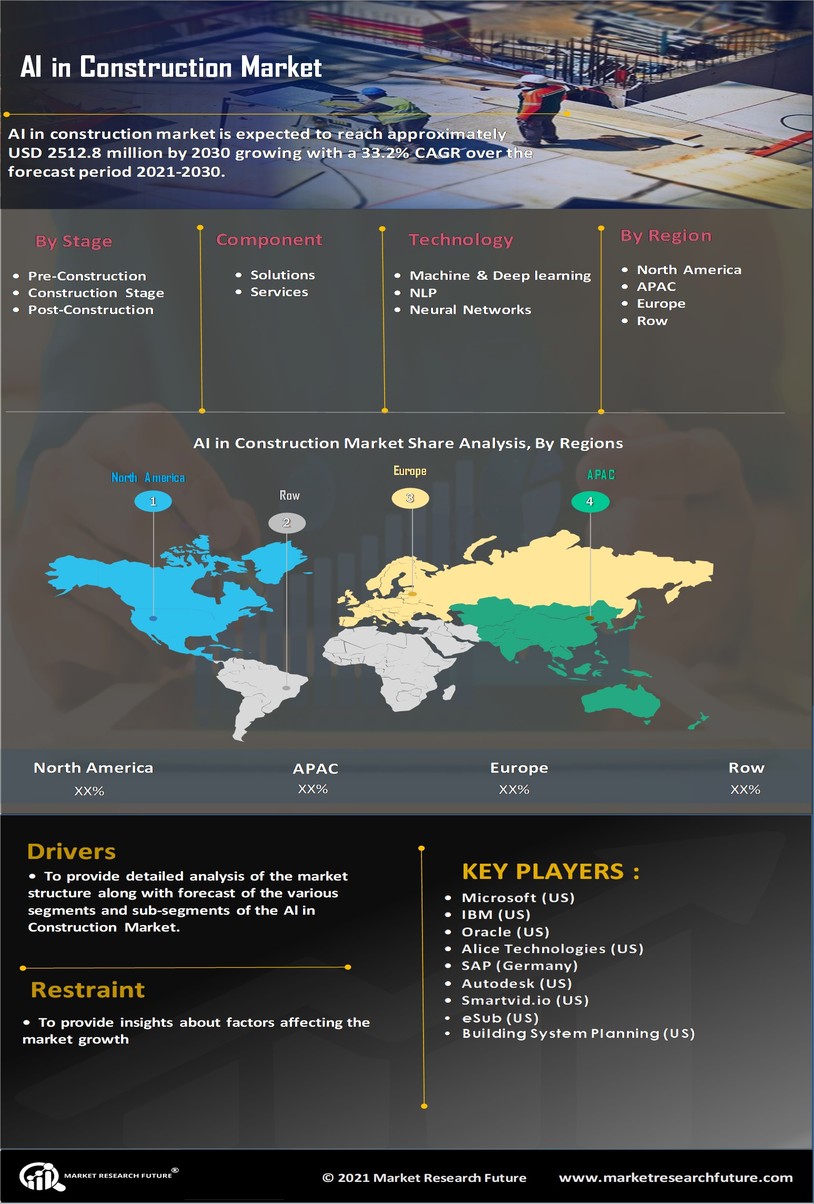Enhanced Safety Measures
Safety remains a paramount concern in the construction sector, and the AI in Construction Market is addressing this through innovative technologies. AI applications, such as computer vision and predictive analytics, are being utilized to identify potential hazards on construction sites. By analyzing data from past incidents, AI can predict and mitigate risks, leading to a reduction in workplace accidents. Reports indicate that companies implementing AI-driven safety protocols have experienced a decrease in incident rates by as much as 40 percent. This focus on safety not only protects workers but also enhances project timelines and reduces costs associated with accidents, thereby driving the adoption of AI solutions in the industry.
Data-Driven Decision Making
The AI in Construction Market is increasingly characterized by a shift towards data-driven decision making. With the proliferation of IoT devices and sensors on construction sites, vast amounts of data are generated daily. AI technologies can analyze this data to provide actionable insights, enabling stakeholders to make informed decisions regarding project management, resource allocation, and risk assessment. This trend is expected to enhance project outcomes and efficiency, as companies leverage data analytics to optimize their operations. The market for AI-driven analytics tools is anticipated to grow significantly, with estimates suggesting a compound annual growth rate of around 20 percent over the next few years.
Cost Reduction and Budget Management
Cost management is a crucial aspect of construction projects, and the AI in Construction Market is poised to revolutionize this area. AI technologies can provide accurate cost estimations and budget forecasts by analyzing historical data and current market trends. This capability allows construction firms to identify potential cost overruns early in the project lifecycle, enabling proactive measures to be taken. Studies indicate that companies utilizing AI for budget management can achieve cost savings of up to 15 percent. As the construction industry continues to face economic pressures, the demand for AI-driven cost management solutions is likely to increase, further propelling the growth of the AI in Construction Market.
Increased Efficiency and Productivity
The AI in Construction Market is witnessing a surge in demand for solutions that enhance efficiency and productivity. AI technologies, such as machine learning and automation, streamline various construction processes, from design to execution. For instance, AI-driven project management tools can optimize scheduling and resource allocation, potentially reducing project timelines by up to 30 percent. Furthermore, the integration of AI in construction equipment allows for real-time monitoring and predictive maintenance, minimizing downtime. As a result, companies are increasingly adopting AI solutions to improve operational efficiency, which is projected to contribute to a market growth rate of approximately 25 percent annually over the next five years.
Sustainability and Environmental Impact
Sustainability is becoming a critical focus within the AI in Construction Market. As environmental regulations tighten, construction companies are increasingly turning to AI solutions to minimize their ecological footprint. AI can optimize material usage, reduce waste, and enhance energy efficiency in construction processes. For example, AI algorithms can analyze building designs to suggest sustainable materials and construction methods, potentially reducing carbon emissions by up to 50 percent. This commitment to sustainability not only aligns with regulatory requirements but also appeals to environmentally conscious consumers, thereby driving the adoption of AI technologies in the construction sector.

















Leave a Comment